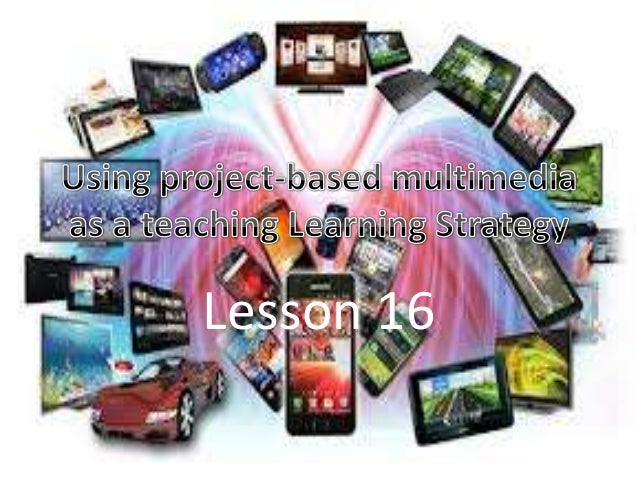
- Project based learning enables classrooms to emphasize this under valued part of the "Invisible curriculum" what author Daniel Goeman has called "Emotional Intelligence".
- Using project - based learning multimedia as a strategy in teaching is effective in increasing students motivation by engaging them in their own learning, in improving student problem-solving and higher order thinking skills.
- Teaching with the project-based method enables students to work cooperatively with peer and mentors in a student-centered environment where learners are encouraged to explore various topics of interest. It also provides opportunities for interdisciplinary learning by engaging students in applying the content of different subject areas.
- Goals and Objectives are always the starting points of planing. When we plan a multi-media learning project as a teaching strategy, we begin by clarifying our goals and objective. Another important thing is to determine the resources available- from library materials, community resources both material and human, internet, new media- since this project calls for Multi-Media. To trim down time devoted to a multi-media project, Simkins et al (2002) suggested the following:
- use technology students already know
- use time outside of class whenever possible
- assign skills practice as homework
- use special classes (like art or music) as extra time
- let students compose texts and select and prepare graphics and sounds as they plan
Before
the project starts:
1. Create
project description and milestones
2. Work
with real world connections
3.
Prepare resources
4.
Prepare software and peripherals such as microphones
5.
Organize computer files
6.
Prepare the classroom
Introducing
the project ( one or two days )
1. Review
project documents
2.
Perform pre-assessment
3.
Perform relevant activities
4.
Group students- here are some grouping strategies:

- by topic interest
- by student talent and expertise
- by student choice randomly
Learning
the technology (one to three days) - Give a chance for the students to work
with whatever software and technology they will be using.
- Preliminary research and planing (three days to three weeks, depending on project size) - At this stage, students should immerse themselves in the content of subject matter they need to understand to create their presentation.
- Concept design and Story boarding (three to five days)- A story board is a paper- and- pencil sketch of the entire presentation, screen by screen or in the case of videos, shot by shot, requiring a story board provides a natural check-in point for you and gives your students an opportunity to plan ahead.
Here
are a few design tips to keep in mind throughout story boarding and production.
- Use scanned, handmade artwork to make a project look personal and to manage scarce technology resources.
- Keep navigation
- Organize information similarly throughout so users can find what they are looking for
- Care for collaboration
- Organize manageable steps
- Check and asses often
- Assessing, testing and finalizing presentations (one to three weeks)- There are two kinds of testing to think about
- Functional Testing- Trying all the buttons, taking all possible paths thru the presentation, checking for errors, missing images and the like
- User- Testing- Showing the presentation to members of the target audience and finding out if they can successfully navigate it and understand it.
*
Assessment means critical evaluation of your presentation.
- Concluding activities (one to three days)- Allow time for students to present and show off their hard work. Often there is an obvious, authentic concluding activity related to your real- world connection. Remember to take time to review the ups and downs of the project with students and anyone else who participant
Walang komento:
Mag-post ng isang Komento